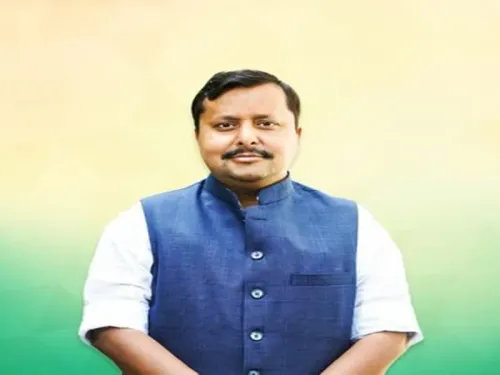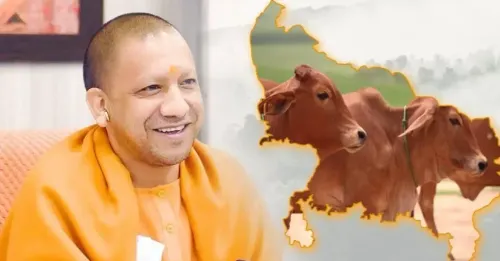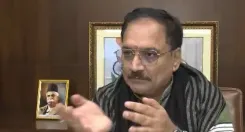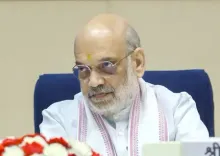Will the End of Jungle Warfare Mark the Start of Information Warfare? The Urban Naxal Challenge Beyond 2026
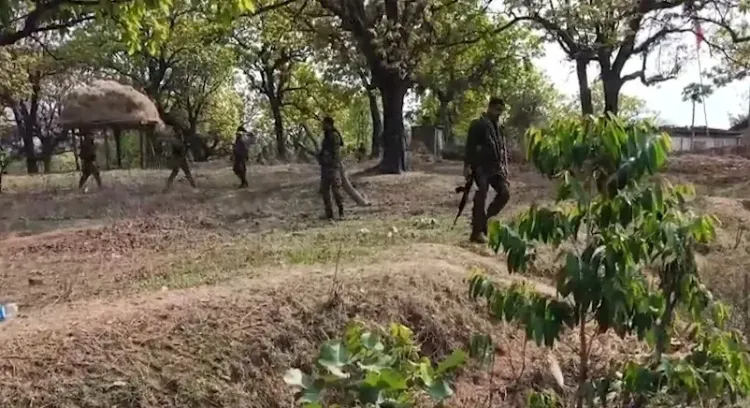
Synopsis
Key Takeaways
- Union Home Minister aims to eradicate naxalism by March 2026.
- Urban naxals pose a significant challenge through misinformation.
- Maharashtra CM highlights the need for vigilance against urban naxals.
- Investigations have shown that urban naxal campaigns are often funded from outside.
- The government is preparing strategies for post-2026 challenges.
New Delhi, July 23 (NationPress) Union Home Minister Amit Shah has pledged to eradicate naxalism from India by March 2026. Given the effectiveness of the security forces, this goal seems achievable, although obstacles remain.
Maharashtra Chief Minister Devendra Fadnavis issued a grave warning that urban naxals from outside the state are utilizing financial resources to disseminate misinformation and divert the residents of Gadchiroli away from development. He made these remarks during an event in the Gadchiroli district, a known stronghold for Naxal activity.
The National Investigation Agency (NIA) and several other organizations, following the violence in Bhima Koregaon, raised alarms about the urban naxal phenomenon. They highlighted how these individuals residing in urban settings are advocating for their counterparts in the forests and are also mobilizing funds to support them.
As the deadline set by the Home Minister approaches and security forces intensify their operations, the Intelligence Bureau cautioned that while the armed conflict in the forests may diminish, the machinery of propaganda will persist in spreading false narratives.
Fadnavis underscored the need for vigilance against urban naxals, who are actively spreading disinformation. He noted that when Gadchiroli began to make strides in development, including laying the foundation for a steel plant, a social media campaign emerged the very next day claiming that tribal people were being killed and that the steel plant was encroaching on their land.
Another campaign launched by urban naxals falsely asserted that large-scale deforestation was occurring. This was particularly surprising as the Maharashtra government has not engaged in any such activities.
Fadnavis indicated that investigations revealed the orchestrators of these campaigns were not even from Maharashtra; two hailed from Kolkata and two from Bengaluru, and they were found to be operating with foreign funds.
Officials express confidence that the confrontation with Naxalites in the forests will conclude by 2026. The residents in Naxal-impacted regions have shown support for security forces as they feel safer and, importantly, are witnessing progress.
However, the struggle post-2026 is anticipated to be arduous, with various agencies already highlighting the issues pointed out by Fadnavis.
Following the NIA's 2019 investigation and the crackdown on foreign funding, the urban naxal issue has significantly declined. Nonetheless, numerous elements persist that could continue to stir tensions.
The Union Home Ministry is currently devising a strategy for the post-2026 landscape, which includes addressing the sympathizers of the Naxalite movement residing in urban areas.
Teams are being established to monitor social media content closely. There is a potential for fake protests aimed at inciting the public. These teams will also scrutinize funding sources for these elements, which could be employed to launch a large-scale disinformation campaign.
In the lead-up to last year's Lok Sabha elections, a substantial campaign emerged regarding the Constitution of India. The sympathizers of the Naxalite movement are expected to initiate similar efforts aimed at inciting public sentiment against the Constitution. They are well aware that if their disinformation campaign gains traction and the public becomes agitated, all positive progress may be jeopardized. Historically, they have attempted to mislead and provoke vulnerable populations in rural areas.
Fadnavis, in his address, affirmed that certain individuals (urban naxals) are attempting to sow confusion among the populace by disseminating falsehoods to deter them from development.


